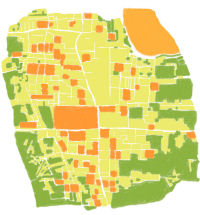

Figure 39a and 39b: road abstractions of the urban landscape of Sultan Kala (north to the top).
There is a 'danger of becoming so preoccupied with fine detail that large patterns become virtually invisible' (Wilson 2000, 213). Looking at the Merv images it is hard not to see the broad pattern of the urban landscape: the eye can see the streets and canals criss-crossing the city, isolate the courtyards, sense that scale of building and open space. The interaction of elements creates a sense of space.
Many artists have attempted to capture the rhythm and structuring of space, condensing the essence of the landscape, transforming it into shapes of colour that evoke perception rather than simple documentation. For me Paul Klee best captured this approach: 'Art does not reproduce the visible; rather, it makes visible' (Creative Credo, 1920). His Tunisian paintings, such as Red and White Domes (1914), capture the spirit of the place and the structure of its landscape.
Wassily Kandinsky, in his seminal work Über das Geistige in der Kunst (Concerning the Spiritual in Art) (1911), separated his paintings into improvisations – spontaneous in mood and feeling – and compositions – inner visions on a grander scale, carefully planned and structured. Perhaps we can use both approaches to try to capture the ancient city.
Improvisations: sweeping lines reflecting the rhythms of the place rather than the detail of the observations. Stand back and take a deep breath! Sketching by hand provides broad sweeps of sense, versus the staccato jags of detail (and digitisation). Feel the rhythm of the buildings; quick lines delineate the ideas, challenge them, refine them.
A quick attempt (Fig. 39a and 39b) uses colours to try to reflect the rhythm of the space, highlighting through colour major building complexes and garden/orchard space, set against a background of urban housing. Streets and canals were not drawn, but gaps between the other blocks suggest their presence and structure. Smaller courtyards were drawn, but excluded as too detailed for the pattern at a city-wide scale (although they would be included in more detailed zones drawings). While certainly not being revolutionary, the construction of the image helped to develop ideas about the organisation of the space with the city.
Compositions: this may have more long-term potential. After the digitisation process has been completed, and the measurements of built and unbuilt space analysed, a more careful structuring of the colours and shades might reflect more complex understandings of the use of space. Similarly, more care in the drafting of boundaries might be used to emphasise elements of the street and canal system clearly, and the organisation of blocks and neighbourhoods.
© Internet Archaeology/Author(s) URL: http://intarch.ac.uk/journal/issue25/1/6_4.html
Last updated: Mon Sept 29 2008